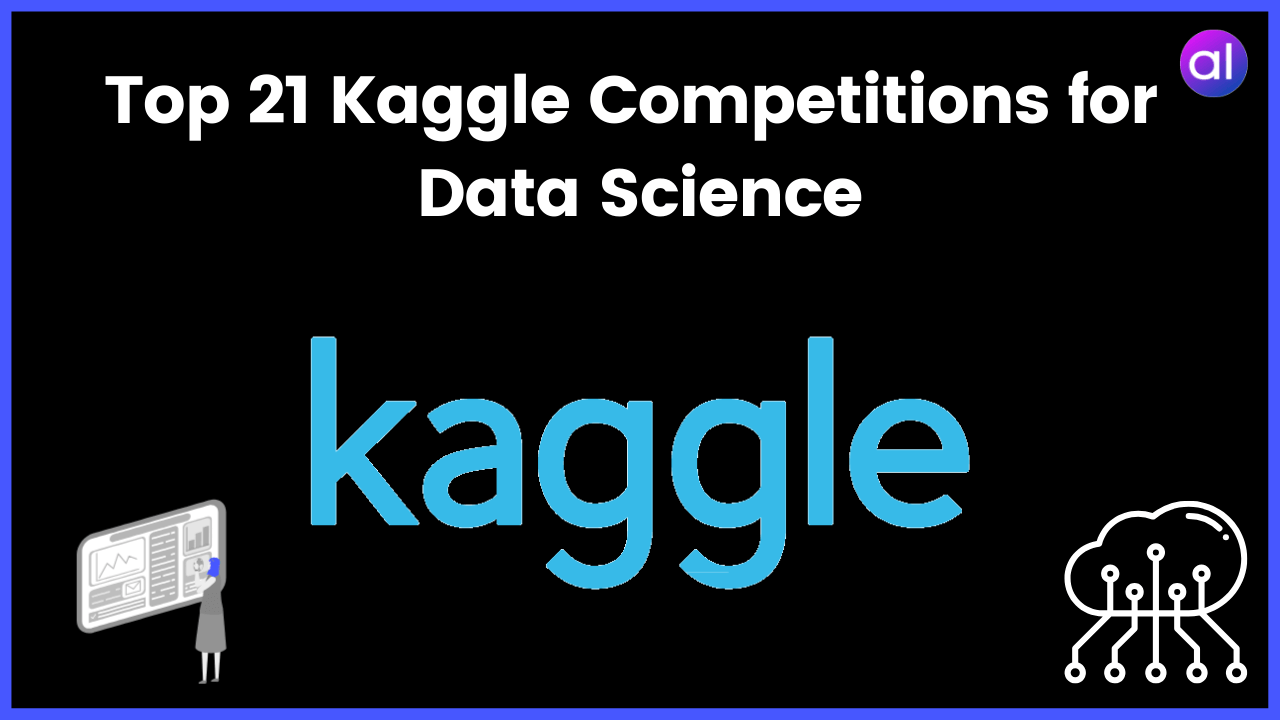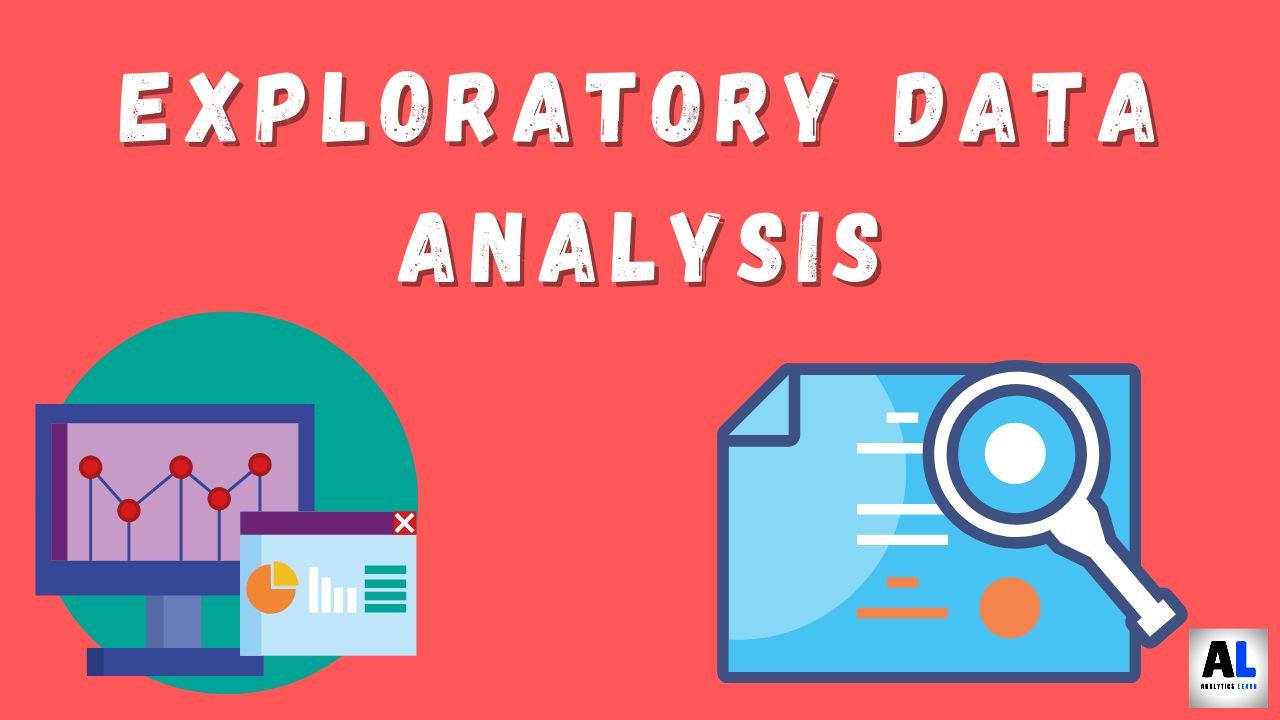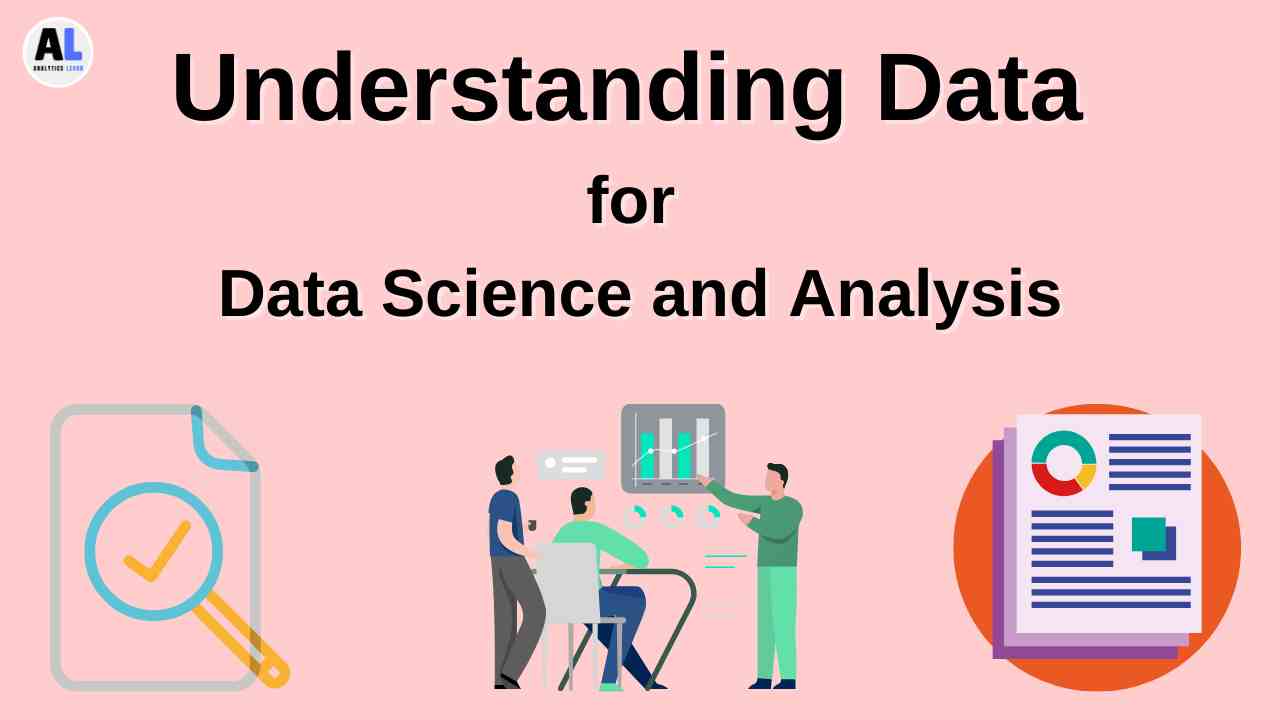In this blog, we will be Unveiling the Top 21 Kaggle Competitions for Data Science Excellence with their implementation steps and reference links.
In the dynamic realm of data science, Kaggle has emerged as the premier platform for honing skills, solving real-world problems, and fostering collaboration within the global data science community.
With an extensive array of competitions covering diverse domains, Kaggle provides a unique playground for data enthusiasts to showcase their prowess.
In this blog post, we’ll delve into the top 21 Kaggle competitions that have left an indelible mark on the data science landscape.
Related Article: What is Kaggle?: Comprehensive Guide
Kaggle Competitions for Data Science
Kaggle competitions provide a platform for data scientists to showcase their skills and collaborate on solving real-world problems through challenging and diverse data sets.
Here are the top Kaggle Competitions for Data Science professionals or enthusiast to gain more expertise in machine learning and data analytics:
1. Titanic: Machine Learning from Disaster
Titanic: Machine Learning from Disaster is a classic Kaggle competition that serves as an ideal starting point for beginners.
Participants are tasked with predicting survival on the Titanic based on passenger data.
Steps:
- Data exploration and preprocessing
- Feature engineering
- Model selection and training
- Evaluation and submission
Reference Link:
Titanic: Machine Learning from Disaster
Example:
Explore kernel solutions and walkthroughs for different approaches to solving the Titanic problem.
2. House Prices: Advanced Regression Techniques
This competition challenges participants to predict house prices based on various features.
It delves deeper into regression techniques and provides a practical understanding of predicting continuous values.
Steps:
- Data preprocessing
- Feature engineering
- Model selection and hyperparameter tuning
- Ensemble methods for improved performance
Reference Link:
House Prices: Advanced Regression Techniques
Example:
Analyze top-performing kernels to grasp advanced regression techniques applied to housing data.
3. Digit Recognizer
The Digit Recognizer competition focuses on image classification, challenging participants to develop models that can correctly identify handwritten digits from the MNIST dataset.
Steps:
- Image preprocessing
- Convolutional Neural Network (CNN) architecture
- Training and validation
- Fine-tuning for improved accuracy
Reference Link:
Example:
Explore different CNN architectures and techniques used for digit recognition in the provided datasets.
4. Cassava Leaf Disease Classification
This competition addresses a critical agricultural problem by requiring participants to develop models capable of classifying diseases affecting cassava leaves.
Steps:
- Image preprocessing
- Transfer learning with pre-trained models
- Model evaluation and optimization
- Interpretability of model predictions
Reference Link:
Cassava Leaf Disease Classification
Example:
Investigate how transfer learning and data augmentation techniques improve model performance.
5. Tabular Playground Series – Mar 2021
This Kaggle competition presents a tabular dataset, challenging participants to predict a target variable.
It’s a great opportunity to practice on a diverse, real-world dataset.
Steps:
- Exploratory Data Analysis (EDA)
- Feature engineering
- Model selection and evaluation
- Ensemble techniques for model stacking
Reference Link:
Tabular Playground Series – Mar 2021
Example:
Explore how participants approached feature engineering in tabular datasets for optimal predictions.
6. IEEE-CIS Fraud Detection
In the IEEE-CIS Fraud Detection competition, participants are tasked with identifying fraudulent transactions.
It provides a hands-on experience with imbalanced datasets and fraud detection techniques.
Steps:
- Imbalanced data handling
- Feature engineering
- Model selection (e.g., XGBoost, LightGBM)
- Hyperparameter tuning for fraud detection accuracy
Reference Link:
Example:
Investigate how participants addressed the challenges posed by imbalanced datasets in fraud detection scenarios.
7. Jane Street Market Prediction
This competition introduces participants to the world of algorithmic trading by challenging them to predict the market impact of trades.
It’s an advanced competition that combines financial data analysis and predictive modeling.
Steps:
- Time-series data analysis
- Feature engineering for financial data
- Model development and optimization
- Evaluation considering real-world trading implications
Reference Link:
Example:
Explore strategies for handling time-series data and building predictive models in a financial context.
8. Planet: Understanding the Amazon from Space
This competition tasks participants with classifying satellite imagery to monitor deforestation and other environmental changes in the Amazon rainforest.
Steps:
- Image preprocessing for satellite imagery
- CNN architectures for multi-label classification
- Evaluation metrics for multi-label problems
- Transfer learning for improved model performance
Reference Link:
Planet: Understanding the Amazon from Space
Example:
Analyze how participants leverage pre-trained models and handle multi-label classification challenges.
9. PetFinder.my Adoption Prediction
In this competition, participants are tasked with predicting the adoption speed of pets based on various features.
It provides valuable insights into predicting outcomes with societal impacts.
Steps:
- Text and image data preprocessing
- Feature extraction from mixed data types
- Model development and interpretation
- Ethical considerations in predictive modeling
Reference Link:
PetFinder.my Adoption Prediction
Example:
Explore how participants combined textual and image data for effective adoption speed predictions.
10. Google Landmark Recognition 2021
This competition involves identifying landmarks in images from diverse locations worldwide.
It challenges participants to develop models capable of recognizing a wide array of landmarks.
Steps:
- Handling large-scale image datasets
- Deep learning architectures for image recognition
- Evaluation metrics for multi-class classification
- Ensemble methods for improved accuracy
Reference Link:
Google Landmark Recognition 2021
Example:
Investigate how participants tackled challenges associated with recognizing landmarks from a vast array of images.
11. NFL Big Data Bowl
The NFL Big Data Bowl is a unique competition that provides NFL player tracking data.
Participants are challenged to analyze player movements and develop models for predicting various outcomes on the football field.
Steps:
- Time-series data analysis of player movements
- Feature engineering for player tracking data
- Model development for play outcome prediction
- Visualization of results for interpretability
Reference Link:
Example:
Explore innovative approaches to predicting outcomes in sports analytics using player tracking data.
12. Santander Customer Satisfaction
In this competition, participants are tasked with predicting whether a customer is satisfied or dissatisfied with their banking experience.
It provides insights into customer satisfaction prediction using structured data.
Steps:
- Feature selection for structured data
- Model development for binary classification
- Hyperparameter tuning and optimization
- Interpretation of model predictions
Reference Link:
Santander Customer Satisfaction
Example:
Analyze approaches to predicting customer satisfaction and the features that contribute most to the predictions.
13. Understanding Clouds from Satellite Images
This competition challenges participants to segment satellite images and classify cloud types.
It combines image segmentation and multi-class classification, providing a holistic view of image analysis.
Steps:
- Image segmentation techniques
- CNN architectures for image classification
- Multi-class classification evaluation metrics
- Transfer learning for improved segmentation accuracy
Reference Link:
Understanding Clouds from Satellite Images
Example:
Explore how participants approached the challenge of segmenting cloud types in satellite imagery.
14. Data Science for Good: City of Los Angeles
This competition focuses on predicting the likelihood of building inspections resulting in a code enforcement case.
It provides an opportunity to apply data science for social good.
Steps:
- Exploratory Data Analysis (EDA) for social impact
- Feature engineering for predictive modeling
- Model development and optimization
- Ethical considerations in predictive modeling
Reference Link:
Data Science for Good: City of Los Angeles
Example:
Investigate how data science can be leveraged to address social issues and the impact of predictive modeling on decision-making.
15. SIIM-ISIC Melanoma Classification
This competition involves classifying skin lesion images as either benign or malignant.
It provides insights into medical image analysis and the challenges associated with diagnosing diseases from images.
Steps:
- Image preprocessing for medical images
- CNN architectures for image classification
- Evaluation metrics for medical image analysis
- Interpretability of model predictions in healthcare
Reference Link:
SIIM-ISIC Melanoma Classification
Example:
Explore how participants addressed challenges in classifying skin lesions and the implications for healthcare.
16. Hungry Geese
The Hungry Geese competition is an extension of the classic game Snake.
Participants are challenged to develop intelligent agents that can compete against each other in a dynamic, evolving environment.
Steps:
- Reinforcement learning for game agents
- Q-learning and deep Q-networks (DQN)
- Evolutionary strategies for dynamic environments
- Analysis of agent performance in game scenarios
Reference Link:
Example:
Investigate the strategies employed by participants in developing intelligent agents for playing the game of Hungry Geese.
17. Plant Pathology 2021 – FGVC8
This competition involves classifying images of plant leaves based on the presence of diseases.
It provides insights into agricultural applications of image classification.
Steps:
- Image preprocessing for plant pathology
- CNN architectures for multi-class classification
- Evaluation metrics for disease detection
- Transfer learning for improved model performance
Reference Link:
Example:
Explore how participants approached the challenge of classifying plant diseases from images.
18. Halite IV – Exploratory Data Analysis
Halite IV is an ongoing competition that involves developing algorithms for playing a game of resource management and strategic decision-making.
The Exploratory Data Analysis (EDA) phase provides an opportunity to understand the game dynamics.
Steps:
- EDA for understanding game dynamics
- Feature engineering for game strategy
- Visualization of game state transitions
- Initial algorithm development based on insights from EDA
Reference Link:
IV – Exploratory Data Analysis
Example:
Explore the EDA phase to understand the dynamics of the Halite IV game and its implications for algorithm development.
19. OpenVaccine: COVID-19 mRNA Vaccine Degradation
This competition focuses on predicting the degradation rates of RNA molecules, with applications in the development of COVID-19 mRNA vaccines.
It provides insights into bioinformatics and pharmaceutical research.
Steps:
- Data preprocessing for RNA sequences
- Feature engineering for RNA degradation prediction
- Model development for regression analysis
- Interpretation of model predictions in the context of vaccine development
Reference Link:
OpenVaccine: COVID-19 mRNA Vaccine Degradation
Example:
Investigate how participants approached the challenge of predicting RNA degradation rates and its significance in vaccine development.
20. Jane Street Market Prediction II
This is the second iteration of the Jane Street Market Prediction competition, challenging participants to develop models for predicting market movements.
It builds on the insights gained from the first edition.
Steps:
- Time-series data analysis
- Feature engineering for financial data
- Model development and optimization
- Visualization of results for interpretability
Reference Link:
Jane Street Market Prediction II
Example:
Explore advancements and novel approaches in predicting market movements based on participant submissions.
21. Global Wheat Detection
The Global Wheat Detection competition involves detecting and classifying wheat heads in images captured under various conditions.
It provides insights into agricultural applications of object detection.
Steps:
- Image preprocessing for wheat detection
- Object detection techniques
- Evaluation metrics for object detection
- Transfer learning for improved model performance
Reference Link:
Example:
Explore how participants approached the challenge of detecting wheat heads in diverse image datasets.
Conclusion
Participating in Kaggle competitions offers a unique opportunity to apply data science skills to real-world problems, learn from diverse approaches, and engage with a vibrant community of data enthusiasts.
The top 21 Kaggle Competitions for Data Science listed above cover a broad spectrum of domains, providing ample opportunities for both beginners and seasoned data scientists to refine their skills and make meaningful contributions to the field.
As you embark on these challenges, remember that the journey is as important as the destination, and the lessons learned will undoubtedly shape your growth as a data science practitioner.
Happy coding, and may your kernels be ever Kaggle-worthy!
Related Article: Top 10 Kaggle Competitions for Beginners

Meet Nitin, a seasoned professional in the field of data engineering. With a Post Graduation in Data Science and Analytics, Nitin is a key contributor to the healthcare sector, specializing in data analysis, machine learning, AI, blockchain, and various data-related tools and technologies. As the Co-founder and editor of analyticslearn.com, Nitin brings a wealth of knowledge and experience to the realm of analytics. Join us in exploring the exciting intersection of healthcare and data science with Nitin as your guide.










